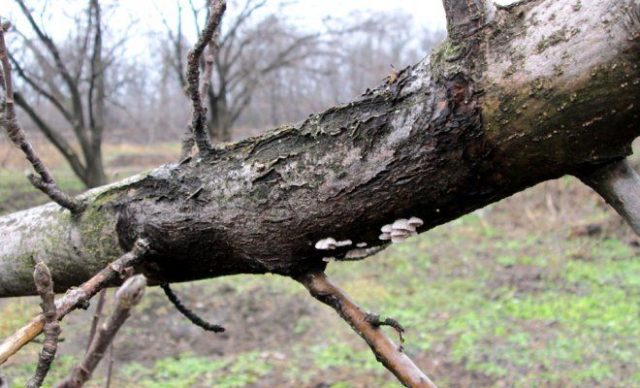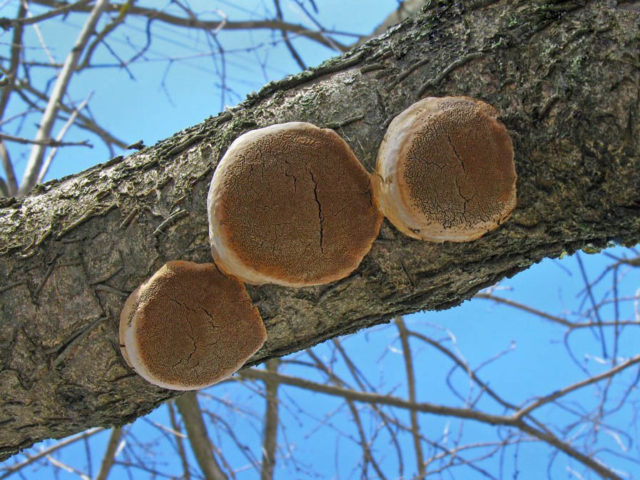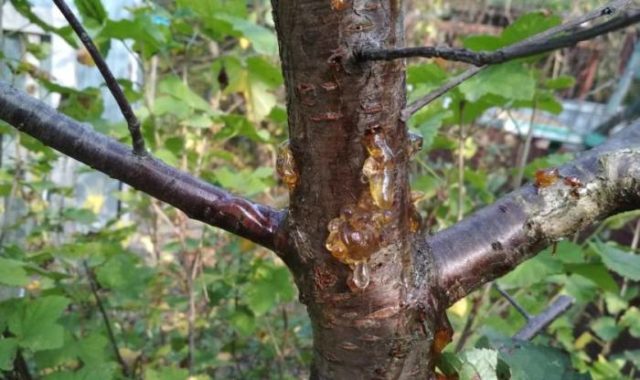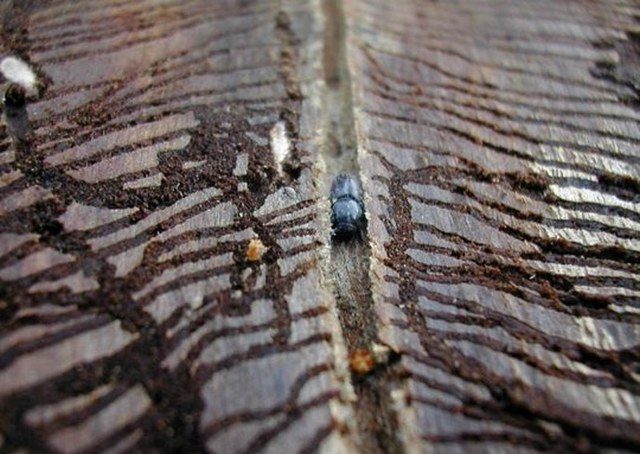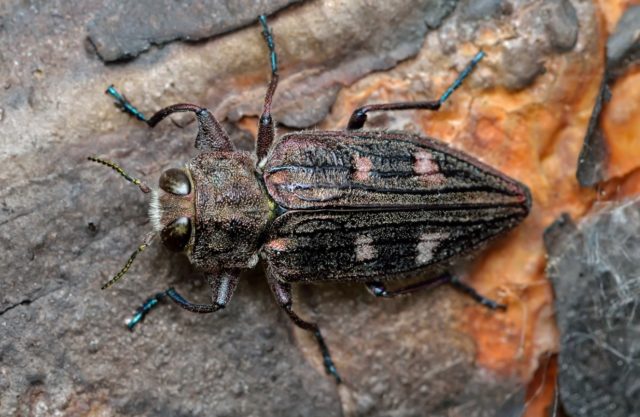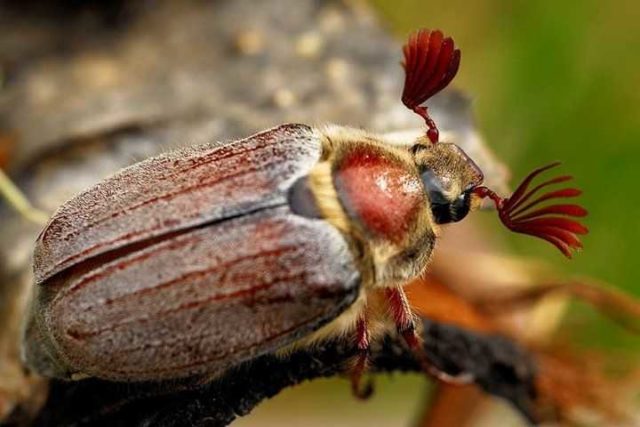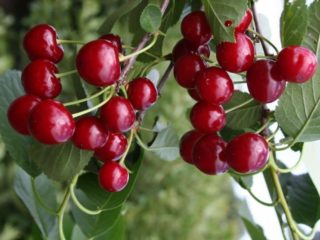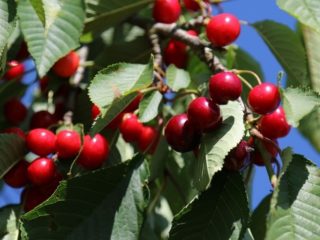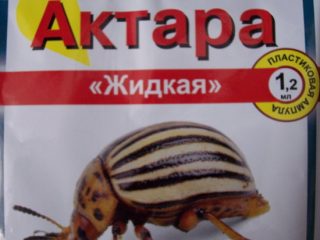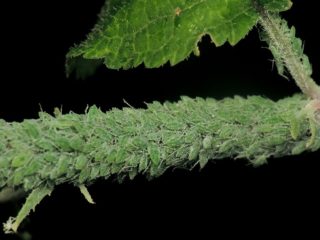Content
Cherry is one of the most popular fruit crops grown in Russia. It is second only to apple in prevalence. If the bark is cracked on a cherry, then she needs help. The presence of cracks makes cherry trees defenseless against pests and various diseases. In wounds resulting from cracking, rot and fungal infections appear. To prevent the cherry from dying, it is important to determine the causes as early as possible and take all the necessary measures to save the garden trees.
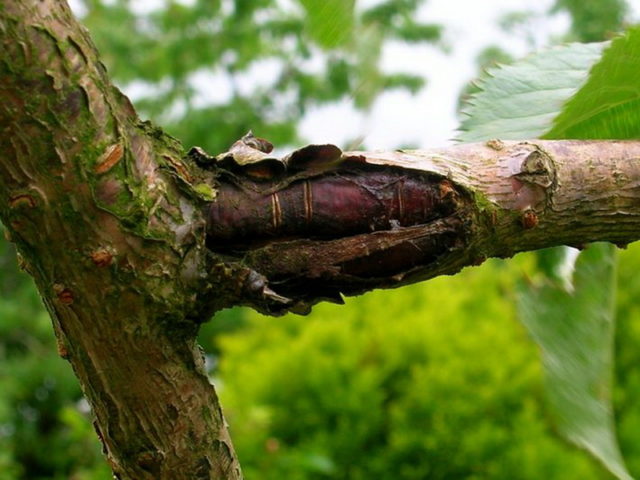
Even experienced gardeners cannot always immediately determine the reason why the bark has cracked on the cherry.
Why does the bark crack on cherries
When choosing a cherry variety, gardeners need to take into account the weather characteristics of their region. So, growing crops with low frost resistance in cold climates will lead to the formation of cracks and the complete death of cherry plantings.
Deformations of the bark are the result of a sharp drop in temperature and weather conditions. From heavy rainfall, the trunks are filled with moisture, which fills microcracks. Frost, replacing rains, turns water into ice, which, expanding, breaks the bark in the weakest places.
Causes of cracks on the bark of cherries
The source of cracked bark on trees can be various factors, from pests to fungal pathogens and weather conditions.
The most common reasons are:
- Severe frosts lead to freezing of internal juices. Under the influence of expansion, the crust succumbs to pressure and cracks.
- Active sun rays form red-brown spots on the bark. Their appearance indicates a strong overheating of trunks and branches. As a result of a burn, entire areas of the bark crack and die off.
- Large harvests in summer and heavy snowfalls in winter put additional stress on the surface of the trees.
- Insect pests, for example, bark beetles gnaw holes in the trunks through which gum begins to flow.
- Too frequent feeding, as well as exceeding the recommended dosages when applying fertilizers, stimulate intensive cherry growth, which can cause cracked bark.
- Rodent activity leads to cracking of the bark of the wood at the base of the trunk.
Improper care can also lead to cracks. Some gardeners, in order to prepare cherries for the arrival of cold weather, feed them with special preparations. This enhances the growth of young shoots, which, not having time to get stronger before the onset of frost, crack.
External factors
To avoid possible situations associated with the bark bursting on the cherry, it is necessary to choose the right place for planting seedlings in advance. For cherry crops, sandy loam and loamy soils are most suitable. The soil should be air permeable and not retain excess moisture. Avoid planting trees in low-lying, shaded and damp areas. An incorrectly chosen place can further cause the bark to crack on the cherry.
For effective growth and development, you should also follow the rules for planting fruit crops. In order for the seedlings to take root in a new place, it is recommended to fertilize the site with organic additives. To do this, six months before planting, manure is added to the ground and dug to a depth of 20 cm.If the soil is too dense, it is necessary to add 10-20 kg of sand per 1 sq. m and plow deeply the entire landing zone.
Loose soil will create favorable conditions for the normal development of the root system of cherry crops and protect against cracking due to lack of nutrients.
Cherry does not tolerate being close to such large trees as pine, linden, oak, which have a strong root system. Being in the same area next to these crops, young seedlings receive insufficient nutrition, which can lead to the fact that the bark exfoliates on the cherry.
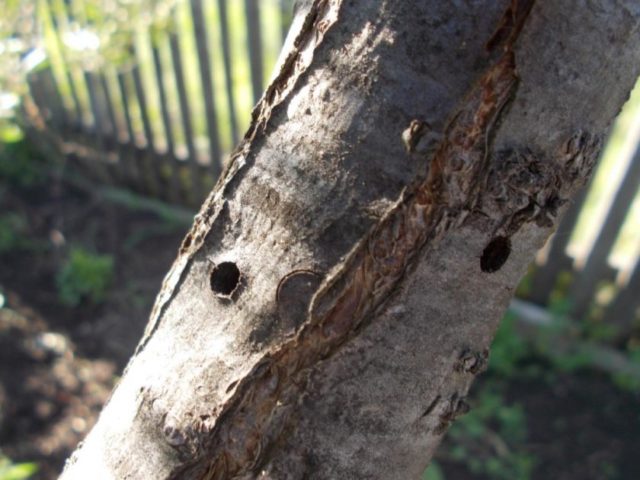
An improperly chosen planting site and non-compliance with the rules of care often lead to cracks.
Diseases
Cracking can be the result of one of the following serious diseases:
- Moniliosis... It is caused by a fungal pathogen and is accompanied by drying out of whole branches, the appearance of cracks and gray spots, and gum flow.
Cherries affected by monilial burn look burnt
- Black cancer leads to surface cracking and partial delamination of the bark. In conditions of high humidity, the disease destroys cherries more intensively.
The main reason for the appearance of black cancer is neglect of preventive treatments
- False tinder - yellow or dark brown hoof-shaped mushroom. Appears on cherry bark, making the wood soft. Weakened trees crack and can break even from a slight physical impact.
The surface of the tinder fungus is covered with small cracks
- Gommoz... A crack in the cherry bark that releases gum may indicate an uncontrolled use of fertilizers. Cherries growing on acidic or very moist soils are also susceptible to gum flow.
The release of the gum is accompanied by cracking of the cherry
Pests
Another reason that the bark is cracked on the cherry may be insects.
The most dangerous pests include:
- Wrinkled sapwood... Eating out the inner layers of the bark, small black bugs leave behind passages through which tree sap begins to ooze. Irrigation of cherries with 3% Bordeaux liquid will help get rid of insects.
The bark and shoots located above the damaged areas completely die off
- Bark beetle gnaws a lot of moves in the cherry trunk, as a result of which a large surface area cracks and dies off. Cherries should be treated with chemicals - Metaphos, Chlorophos.
At the place where the bark beetle enters the trunk, the bark bursts
- Goldfish lay their eggs in the folds of the trunk... The offspring eats leaves, shoots and bark, causing it to crack. The larvae of the goldfish can be washed with a stream of water.
Aggressive stem pests of cherries, goldsmiths, have many different species and colors and are often the culprit for cracked bark on cherries
- Khrushch (May beetle) hatches the larvae in the peri-stem circle. The offspring eats the lower layers of the bark and some of the roots, which leads to the drying out of the trees. Loss of nutrients can cause the trunk to crack in the cherry.
To protect cherries from the invasion of May beetles, the soil is sprayed with a product prepared from 200 g of Bordeaux liquid and 10 liters of water
So that the bark does not crack on the cherry, pest control should consist in a combination of agrotechnical and chemical methods. Digging up the near-stem circles and spraying the plantings with special preparations will protect the culture from the destructive activity of insects.
Rodents
During the summer, cherry trees are exposed to various diseases and insects. In the cold season, plantings can suffer from rodent activity. Vole mice, rats and beavers gnaw at the bottom of the bark, roots and branches. Young seedlings dry up and die from the damage received.
The greatest harm to fruit crops is caused by hares forced to feed on the underground part of the trunks.This is often the reason why the bark cracked on the cherry in winter. Moles and shrews, although they dig in the roots of plants, feed on insects and worms and are not dangerous for cherries.
What to do if the bark of a cherry bursts
If the bark of the cherry tree is cracked, the wounds found must be disinfected. The choice of funds depends on what caused the cracking.
Areas that have burst as a result of sunburn or severe frost are lubricated with a weakly concentrated solution of potassium permanganate. Processing is carried out in the morning and evening. To avoid infection with infections, the damaged areas are treated with a mixture made from 200 g of copper and 10 liters of water.
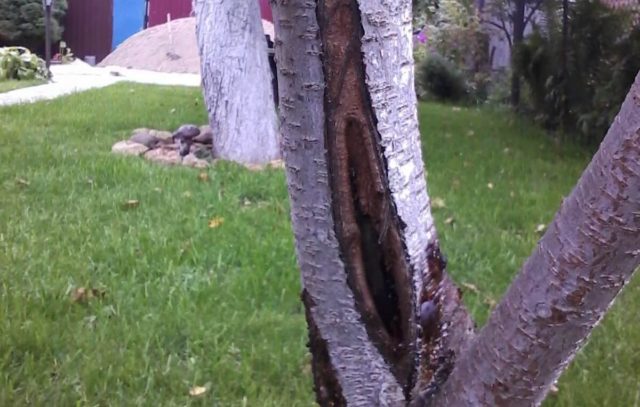
The cracking site becomes a source of infection with infections and active activity of insect pests
A burst trunk can be repaired in most cases. To do this, the cracked area is thoroughly cleaned, tied with wire and abundantly covered with garden pitch. If done correctly, the crack should heal in 2-3 months.
Prevention of cracks in the bark
To prevent the bark from cracking on the cherry, a number of preventive measures must be taken. It is best to do this in autumn or spring, when the planting is being prepared for the onset of cold weather or flowering.
Preventive measures:
- To protect the trunks from frost in winter, they are tied with paper or burlap to preserve heat. Mulching the soil with sawdust will retain moisture and keep the roots from freezing.
- Gardeners should monitor the stress on the cherry branches so that the bark does not crack on them. In winter, it is necessary to control the amount of adhering snow and remove excess snow. In the summer, you should harvest the berries in a timely manner, and during their ripening period, install supports for the branches.
- So that the activity of rodents does not lead to the fact that the bark is cracked on the cherry, the trees are wrapped with roofing material, coated with a mixture of clay and manure. The branches are sprayed with carbolic acid.
- Experienced gardeners recommend furrowing in order to provoke thickening of the trunks. To do this, at the beginning of summer, using a sharp knife, they cut the bark to its entire depth from the ground itself to the skeletal branches, trying not to damage the wood. Such a procedure will speed up wound healing and not only prevent the bark from cracking on the cherry, but also make the culture stronger and more durable. Furrowing is carried out on trees that have reached three years of age, with an interval of 1 time in 4 years.
- Autumn whitewashing will prevent the appearance of cracks and protect the cherry from possible wintering of insects in the bark.
Conclusion
If the bark is cracked on a cherry, it is necessary to find out the cause of this condition as soon as possible. The appearance of cracks makes fruit crops defenseless against the effects of insects and various diseases. To prevent cracking, trees should be properly maintained and preventive measures should be taken regularly to protect cherry crops from pests and infections.

